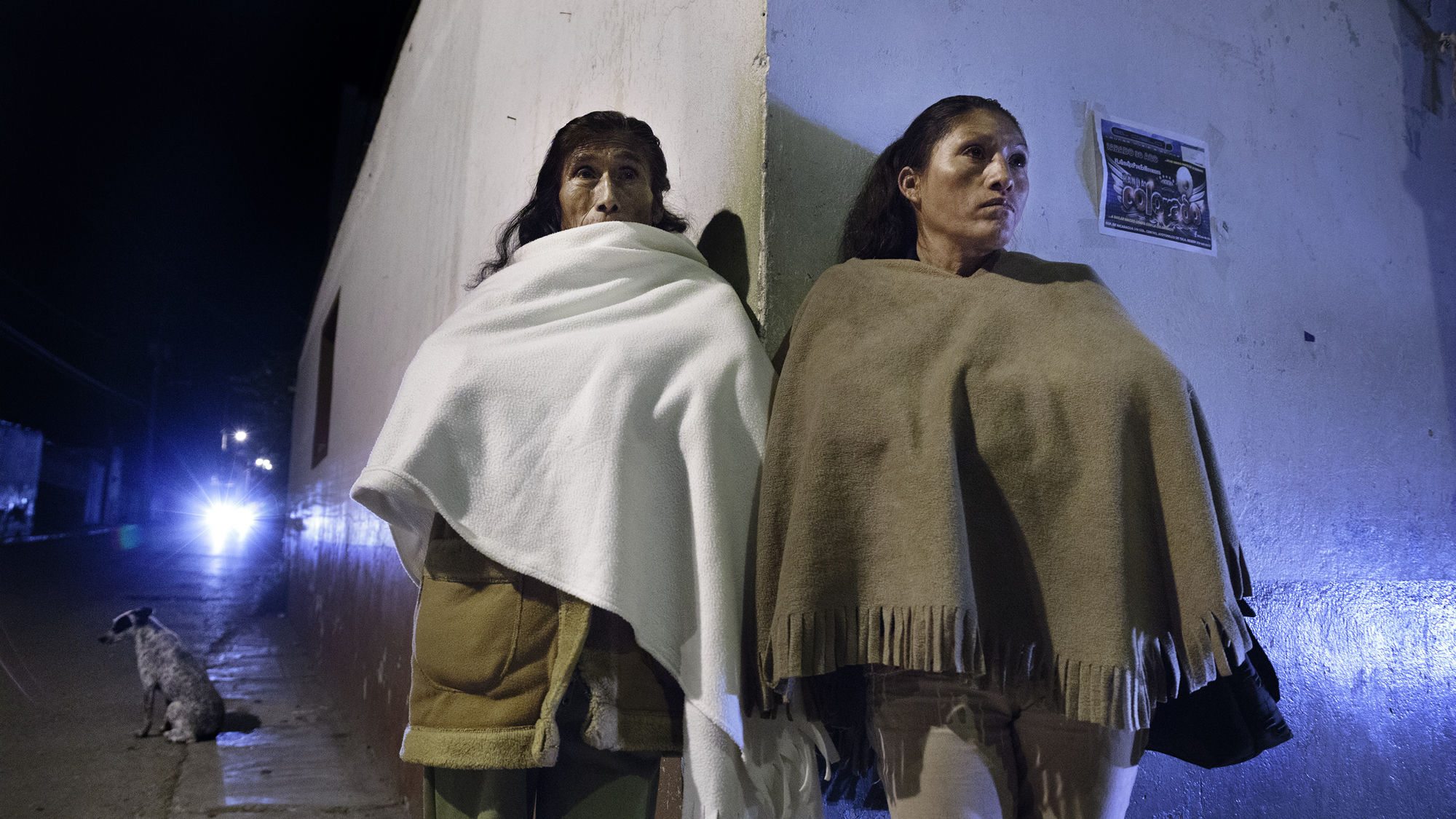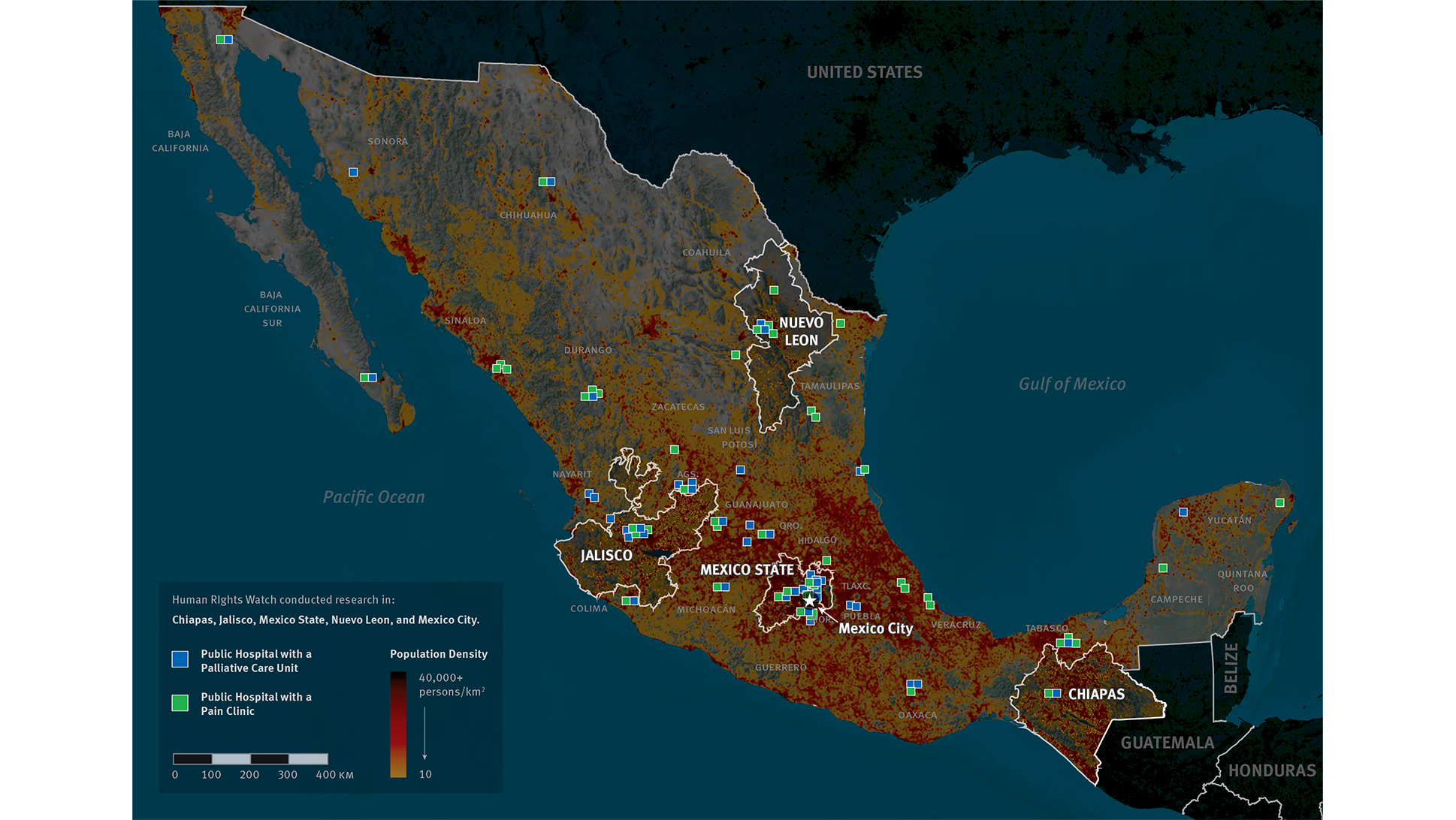The lack of availability of opioid pain medicines is due in
part to insufficient training but also to complex prescription requirements
that discourage physicians from obtaining the license needed to prescribe these
medicines and pharmacies from stocking them. México’s health law
requires physicians to use not just special prescription forms for opioid medicines but also barcoded stickers—an unusual requirement. These barcoded
stickers can currently only be obtained in one place in every Mexican state and
must be picked up in person, making this requirement highly burdensome to meet.
This has resulted in the vast majority of doctors, especially those living
outside state capitals, not being authorized to prescribe these medicines. The
government has announced it will replace this system to ensure easier access to
barcoded stickers for physicians.
Even when patients find a physician able to prescribe these
medicines, they face difficulties filling prescriptions. Very few pharmacies,
especially outside state capitals, stock these medicines because almost no
physicians outside state capitals can prescribe them and because of
administrative requirements for licensing and record keeping. Furthermore,
current dispensing regulations frequently force pharmacies to refuse to fill
prescriptions on technical grounds forcing patients to return to their
physicians to pick up new ones.
In January 2009, México added a section on palliative
care to its health law, granting people with terminal illness—defined as
people with a prognosis of six months or less—the right to palliative
care at healthcare institutions and at home. It grants them a right to
information about their illness and prognosis and allows them to make decisions
about medical care at the end of life, including a right to refuse
life-prolonging treatment.
Under the law, all healthcare providers must develop
treatment plans that address the individual needs of terminal patients and
their families. Care must be provided by multidisciplinary teams that include
not just physicians but also nurses, psychologists and other healthcare
workers. The law obliges healthcare institutions to ensure that their personnel
is adequately trained and that they have an adequate supply of medicines to
treat pain and other symptoms.
These provisions of the health law were passed in
recognition of the changing demographics and health burdens facing México.
While México is still a relatively young nation, a rapid demographic
shift is expected to occur in the next few decades. In 2010, only 7.1 million
Mexicans were 65-years-old or older. By 2020, that number will reach 9.8
million, and by 2050, 23.1 million. Meanwhile the prevalence of chronic
illnesses, such as cancer, heart disease and diabetes is on the rise and will
continue to increase as a result of, among others, the aging process. By
developing palliative care services now, México’s healthcare
system can prepare itself for the wave of patients with chronic illnesses that
will seek health services in years to come.
The palliative care provisions in the law are ambitious as
they seek the full integration of palliative care into health services, but
build upon México’s success in achieving near universal health
coverage for its population through a combination of public, employer-based and
private health insurance. Unfortunately, five years after the 2009 changes to
the law, the intended results have yet to materialize.
The law requires a radical shift of the status quo. What is
now ad hoc must become an integral part of the health system. This will require
the development of the infrastructure within the health system capable of
delivering palliative care; assigning and training sufficient numbers of
healthcare workers; and the integration of palliative care into financing
structures and insurance packages. It will also require changes in drug
regulations and medicine policies to ensure the adequate availability and
accessibility of opioid pain medicines. None of this can happen without the
active stewardship of the Mexican government based on a step-by-step
integration plan that identifies effective delivery models, puts into place the
necessary regulatory framework to facilitate the process and holds institutions
accountable for meeting requirements. Until recently, the government had not
undertaken any of these steps.
However, in 2013, the situation began to change as both
Mexican civil society and the government took up palliative care as a priority.
A number of key meetings and an international seminar, organized by the Mexican
Health Foundation (Fundación Mexicana para la Salud), the breast cancer
organization Tómatelo a Pecho, and the National Autonomous University of
México served as catalysts for a number of important policy initiatives.
Civil society has been able to work closely with high-level policy makers and
leading legislators.
In November 2013, México’s president Enrique Peña
Nieto signed a regulation that clarifies the content of a number of palliative
care provisions in the health law. In March 2014, Health Minister Mercedes Juan
López instructed her ministry to develop a national palliative care
strategy. In March 2014, the ministry of health and the Federal Commission for
the Protection against Health Risks (Comisión Federal para la Protección
contra Riesgos Sanitarios, COFEPRIS), México’s regulatory agency
for medicines, announced critical reforms to the system for prescribing and
dispensing strong pain medicines, as well as record keeping. That same month,
the National Commission for Social Protection in Health, which runs Seguro
Popular, one of México’s largest health insurance programs, added
a number of key palliative care interventions to its package. It had previously
not covered palliative care for most patients. Following an internal review,
the Mexican Social Security Institute recently announced its intention to
strengthen availability of palliative care within its system.
Finally, the health ministry is finalizing implementing
norms for the 2009 amendments to the health law, which are expected to be
released in October 2014, and the Public Health Council (Consejo Nacional de
Salubridad) is preparing an agreement between different government agencies on
the development of palliative care.
If these steps are properly implemented, México seems
poised for change. Its roll-out of universal health coverage provides a
healthcare system into which palliative care can be integrated. Moreover, a
number of successful models for the delivery of palliative care already exist.
For example, under Governor Enrique Peña Nieto, México’s
current president, México State launched a state palliative care program
in 2009 focused on developing decentralized services throughout the state and
training healthcare workers, which resulted in the creation of palliative care
units in nine hospitals around the state. Another key model was developed by a
hospital of the Mexican Social Security Institute (IMSS), México’s
largest health insurer, in Monterrey, Nuevo León, and allows patients to
receive palliative care close to their homes through involvement of primary
care providers.
These steps are in line with México’s
obligations under international human rights law, which require it to take
action to remove barriers facing patients who need access to palliative care.
Both the International Covenant on Economic, Social and Cultural Rights, which México
ratified in 1981, and the prohibition of torture, cruel, inhuman and degrading
treatment in the International Covenant on Civil and Political Rights, also
ratified in 1981, can be understood as obligating the government of México
to act expeditiously to ensure access to palliative care and pain medicines.
The well-being of hundreds of thousands of people in México, who seek
dignity and peace in their final days, depends upon the government accelerating
action on the implementation of the 2009 health law reforms and realizing the
goal of an integrated system of palliative care nationwide.








